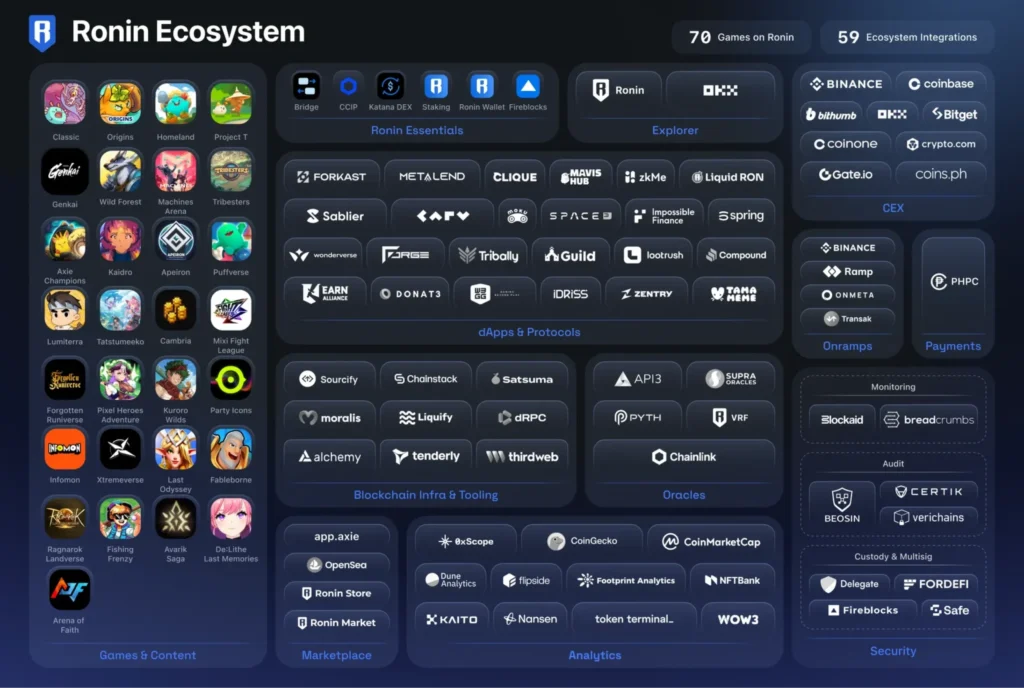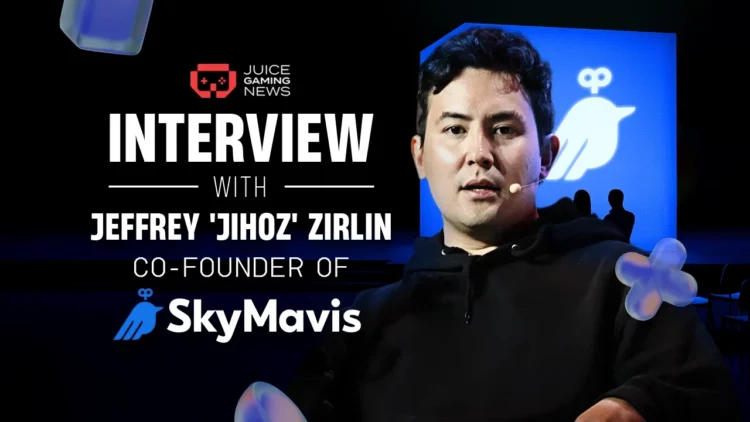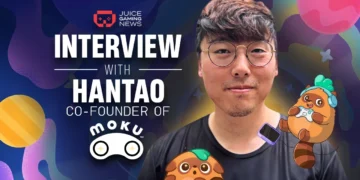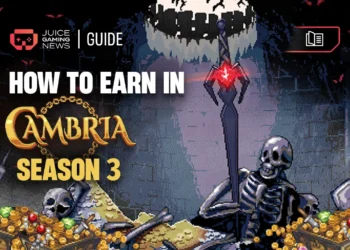Quick Take
- Atia’s Legacy MMO has already pulled in 17,380,000 pre-registrations ahead of its first playtest
- Jihoz calls Axie Infinity the “Bitcoin of Web3 gaming” and Ronin the home of economic innovation
- Risk-to-Earn mechanics, wars as economic sinks, and Ronin Profiles will shape the MMO’s economy
Inside Ronin and the Rise of Crypto Gaming
Jeffrey “Jihoz” Zirlin is a co-founder of Sky Mavis, the studio behind Axie Infinity and the Ronin Network. For seven years, he has been at the center of crypto gaming’s rise, from onboarding millions of first-time crypto users to shaping token incentive models that other developers now study.
Zirlin is a gamer and collector at heart. He grew up playing StarCraft and filling cabinets with insects and fossils. Those instincts, competitive play and collecting, fuel the games Sky Mavis builds today.
Now, Sky Mavis is pushing into a new frontier with Atia’s Legacy, a large-scale MMO set in the Axie universe that has already drawn 17,380,000 pre-registrations. It will blend squad combat, social coordination, and a player-driven economy with NFT and token integrations on Ronin. A closed playtest for 500–750 players is targeted for September.
We spoke with Jihoz about Axie’s role in gaming history, Ronin’s position in the industry, and why Atia’s Legacy could be the most ambitious experiment yet in crypto gaming.
First, for anyone watching who doesn’t know you, can you introduce yourself and what you do?
Sure, I’m Jihoz and I’m a co-founder of Sky Mavis. I’m a gamer and a collector. Those are key to my identity. I grew up collecting insects and fossils. The first thing I ever did on the Internet was play StarCraft. So, yeah, from an early age, I’ve been collecting things, and I also could see how games are a great way to introduce people to new technologies.
I’m the Chief Growth Officer over here. And Ronin is a blockchain that’s been designed to make crypto fun and easy for people. Typically, when you look at the adoption of new technologies, you see that gaming is at the forefront. Things like Angry Birds basically facilitated the adoption of the iPhone and the App Store. StarCraft facilitated the adoption of the Internet. That’s why Korea has really high Internet speeds.
That’s basically what we’re trying to do. We have Axie as well, Axie Infinity. This is something that is kind of like Pokémon or Tamagotchi, and it onboarded millions of people to this technology. It was the first game ever to onboard and hit millions of daily active users. Most crypto companies say, hey, we’re going to onboard tons of people to crypto, but they just put that on their website and never follow through. Whereas we actually have the proven success when it comes to onboarding.
We created this really strong, welcoming community that is ready to play different games and experiences, gamified applications on top of the Ronin chain. We also have a vibrant developer community building on top of the chain with things like Games, DeFi applications, and different types of gamified apps that use crypto.
How do you explain what Play-to-Earn is to someone new to the space?
The idea behind Play-to-Earn is that gamers do a lot of work for the games they play.
They add a lot of value to these ecosystems. Play-to-Earn is about using incentives to reward players for the value they create. That’s the simple idea behind it. We’ve also created games that are partly owned by the players themselves.
It’s very much an egalitarian movement that gives more power and more freedom to gamers. Over the last seven years, this has introduced many people to crypto. They’ve gone on to learn how to use DeFi primitives, started building in the space, and even bought assets like Bitcoin and ETH, which have appreciated significantly.
What we’re doing is empowering people with digital property rights, and we’re using gaming as the carrot to introduce them to these concepts.

Ronin has been at the center of crypto gaming trends. In 2020 you coined the term Play-to-Earn, in 2023 Pixels came in with Play-to-Airdrop and now in 2025 Cambria catalyzed Risk to-Earn. What’s next?
The CEO of Roblox is an investor in Sky Mavis, and he thought our grading system was genius. There’s a lot of alignment there in terms of principles. The new generation understands digital money and digital goods even better than us. We grew up with Diablo and World of Warcraft, but the generation that grew up on Roblox and shorts is going to be crypto native from day one.
Pixels was the first time we ran that type of campaign, and it got so much traction that it catalyzed listings on Binance and Coinbase. Pixels got listed on Binance, and RON, because of that traction, was the first alt this cycle listed on both Coinbase and Binance due to actual traction. That’s going to be huge as retail investors reactivate and everyone checks their Coinbase accounts.
I’ve had friends telling me they got notifications from Coinbase that crypto is going up. We’re still in the part of the cycle where people are just waking up. ETH hasn’t even made a new all-time high yet. As the normies get reactivated, it’s really important to have these coins on Coinbase and Binance. We’re also seeing institutional adoption. This cycle will get crazy once we start listing gaming tokens on the New York Stock Exchange. That’s already happening with some of the top 20 coins, and it’s going to trickle down to alts and small caps.
Do you think these trends will always define the industry or are we just in a discovery phase and these terms will fade?
If you talk to people who haven’t followed crypto gaming since 2021, they’re surprised. There are a lot of teams now doing interesting things, with traction, good user metrics, revenue, and new token incentive models. Fishing Frenzy is doing both reputation and Risk-to-Earn with interesting creator incentives. Cambria has made progress on the guild model. Pixels is building its arcade and getting better in terms of optimizing token emissions.
So when people come in now, they see something very different from 2021 when Axie dominated everything. The industry is much bigger. Ronin is actually bigger now than it was at the peak of the Axie boom when you look at gas fees and on-chain activity.
We’ve been grinding for a long time, and it felt like we weren’t getting recognition. Now institutions are taking notice. ETH is doing well, NFTs are recovering, and the cycle always goes Bitcoin, ETH, alts, NFTs, gaming. Gaming had the highest returns last cycle, so it’s definitely on the radar for Q4.

What do you think Ronin is doing right that other gaming chains haven’t been able to replicate?
Ronin is the home of economic innovation when it comes to crypto gaming and incentives. We’ve proven that time and again. We’re antifragile, we’re innovative, and this community is ridiculously hardened.
The best founders who want to innovate with incentives and crypto gaming come to Ronin. Why? Because we invented that with Axie. They want to work with us. We also have a user base that understands the pitfalls, knows how to give feedback, test products, and produce winners.
When Ronin opened up, many games came in expecting quick success but didn’t stick. What separates the ones that last from the ones that don’t?
Not all games are going to win. After we opened up, we went through an adjustment period. A lot of junk came onto the chain trying to get funding before dying. That caused a washout of the industry.
What we see now is that the majority of the interesting experiments in crypto gaming are happening on Ronin. Founders are attracted here because of the history. Ronin has been the chain for economic innovation.
If you’re failing somewhere else, moving to Ronin isn’t going to save you. Pixels was the number one game on Polygon with 5,000 DAU, so I said let’s bring them over and see what happens. They were already in triple-A, putting up a good batting average, and we helped them get to the next level. But if you’re in single-A, we can’t just turn you into a major leaguer.
Sometimes founders feel entitled. Even if they’re hardworking, they might not be good enough. You can’t just be hardworking you also have to be good. The teams that are good enough, in my opinion, are on the right track.
One of the big concerns in Play-to-Earn has been extraction. What role will Ronin Profiles play in shaping an ecosystem that protects against that?
Reputation is an important primitive for an ecosystem that’s using incentives as a lever to drive growth and adoption. This is also really important for developers. Imagine a world where you basically have an API that has all the data from the Ronin Profiles.
You’re seamlessly able to target people or even whitelist them for things like mints, playtests, or the ability to earn rewards. You can target players on very specific characteristics and ensure that you’re rewarding missionaries over mercenaries. The Ronin Profile, theoretically, is the system that allows you to target missionaries and remove mercenaries, extractors, bots, and sybils from the equation.
A lot of the smartest teams are already thinking about this, because any working system will eventually be gamed. Pixels is thinking about reputation. Axie has the Axie Score, which was always part of the vision. Fishing Frenzy and Cambria are both figuring out reputation systems as well.
The idea behind Profiles is to create a reputation system, maybe even a reputation aggregator, that allows developers to target the right players with the right rewards. If we get this right, we’ll solve a lot of the issues that have held Web3 gaming back from getting to the next level.
This is one of the most difficult and complex problems to solve in crypto, but that also means the upside for teams and communities that figure it out is extremely high.

Atia’s Legacy playtest will come in September. What part of the MMO can you share right now?
We just had the town hall, and the goal is to have the playtest in early or mid September. We’ll have it for 500 to 750 people, so relatively small. The main focus is testing the squad-based combat system. That’s new and innovative, there hasn’t been a system quite like it. Players will be able to fight monsters, take on a boss, and really get a feel for how the movement and combat system will work.
I played an early build myself, fought a boss, and was surprised at how smooth it felt. We’re taking it step by step. It’s rare for an MMO mode to be announced and then tested within six months. The idea is to show progress early, prove it to the community and outside world, and get feedback much earlier than traditional MMO development cycles.
How will Axie Core like AXS, SLP, and NFTs integrate into progression without throwing new players off balance?
We want to make sure there’s NFT integration. We’re thinking about having Axie core levels integrated into the game, maybe with a dual leveling system. I believe tens of thousands of deeply engaged users are more valuable than millions of shallow ones.
EVE Online has 30,000 subscribers and makes $60 million a year. Imagine a game that combines the economics of EVE with the accessibility of Pokémon. That could be massive. EVE is a great idea in terms of economics, but the average EVE player has a master’s degree. It’s too complex. The idea of real war, conquering territory, that’s powerful and if you combine that with an approachable IP, it can go crazy.
Will mechanics like Play-to-Earn or Risk-to-Earn be core to this game?
Yeah. There should be some Risk-to-Earn elements via the war.
MMOs play into player-driven markets, and we’ve seen that through games like RuneScape, World of Warcraft, and EVE Online. Destruction is the best sink for a game economy. At the end of the day, you can model these economies with faucets, which are sources of tokens, and sinks, which mop up supply. That’s why in the trailer we had the teaser for Guild Wars. We believe that’s going to be really important as a lever for balancing the economy.
Wars are something people are willing to spend on and risk. Is Risk-to-Earn gambling? No. Is going to war gambling? That’s just human nature. People want to fight each other, and it’s actually healthy to do it in an online environment.
Social coordination and large guilds also stimulate the economy and keep people playing for a really long time. All of these things are best approached through an MMO. When you work backwards from the goals, social depth, destruction, longevity, an MMO is the natural solution.
Even Axie Classic and Origins had elements of this. In Classic, you had to pay or someone had to pay for you to play. You were risking your time as well. Play-to-Earn always had elements of this. Sometimes people want a bit of a change, and now we’re seeing new models doing well with Cambria, Fishing Frenzy, and Pixels. People are seeing that as a meta that’s developing, but I also think there will still be a lot of people looking at Play-to-Earn. These are all things associated with our industry. Just like mobile games, free-to-play games, phone games. People call them different things, but they all bubble up into one space.
MMOs are difficult to build and have long development periods. What past learnings are you bringing into Atia’s Legacy?
It’s important to figure out the minimum viable MMO, what core things matter most. Some open-world aspects can be sacrificed in the name of speed so we can focus on what makes MMOs great: social interaction, making friends, achieving things together, competing, and participating in an economy. There’s a way to achieve all of that without overcomplicating the technical execution.
We’ve learned a lot from building Axie and also from working with other studios. It’s like Nintendo. They have their core IPs, studios very close to them, and satellites further out. That’s similar to the Ronin publishing model. People say Ronin is like Ethereum’s Nintendo, and there are parallels there.
We’ve made mistakes, but we’ve learned from them. Innovation comes from trying different things, mixing ideas that haven’t been combined before, and doubling down on what works.
What can players expect from the early build of Atia’s Legacy, and what’s your long-term vision for the game?
We’ll find out what the minimum viable version of Atia’s Legacy looks like over time. The plan is to ship, get feedback early, and keep improving. It’s a different way of building. Instead of disappearing for years, we want to iterate openly.
Usually games put out a roadmap, build in secret, then reveal years later and hope people like it. We’re flipping that. With Atia’s Legacy, it’s about showing progress, engaging the community, and building the MMO in a way that can truly last decades.






